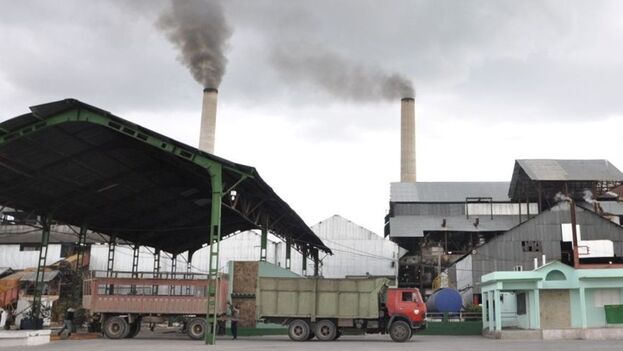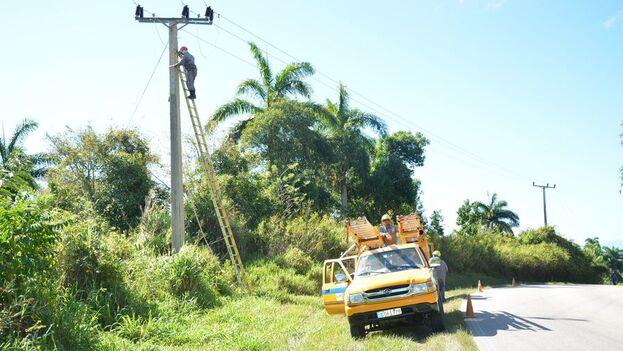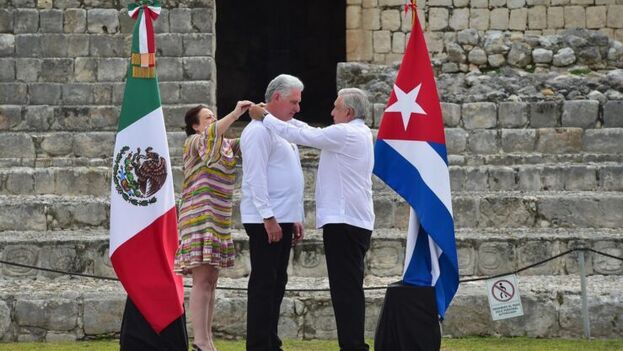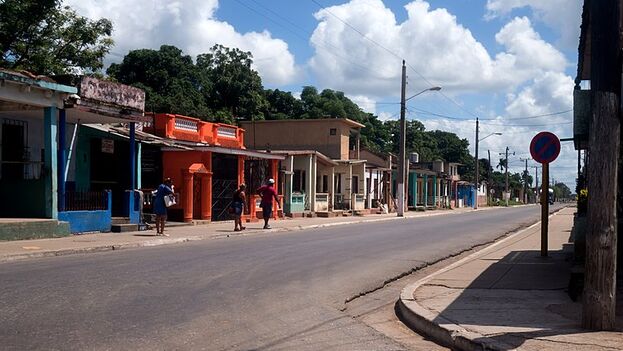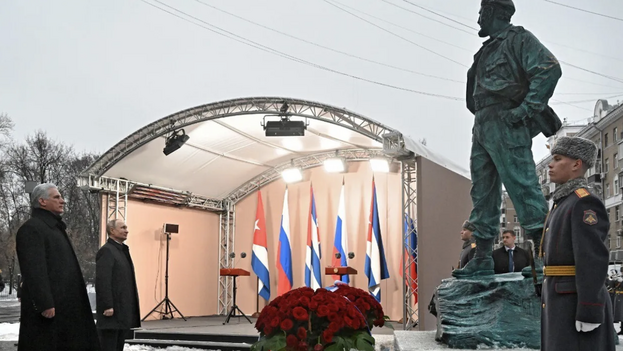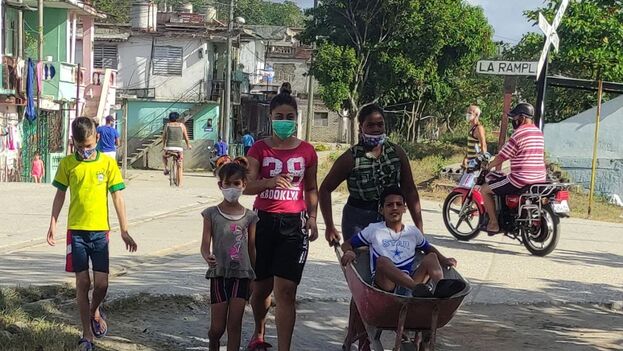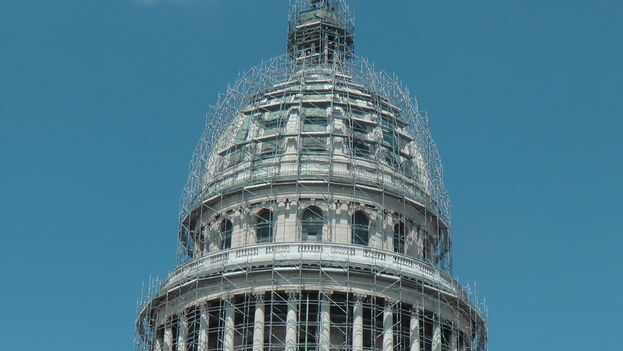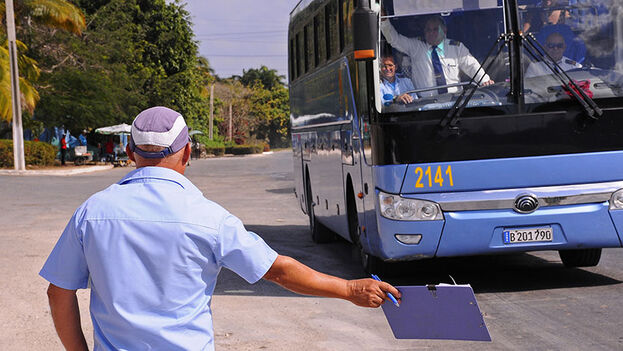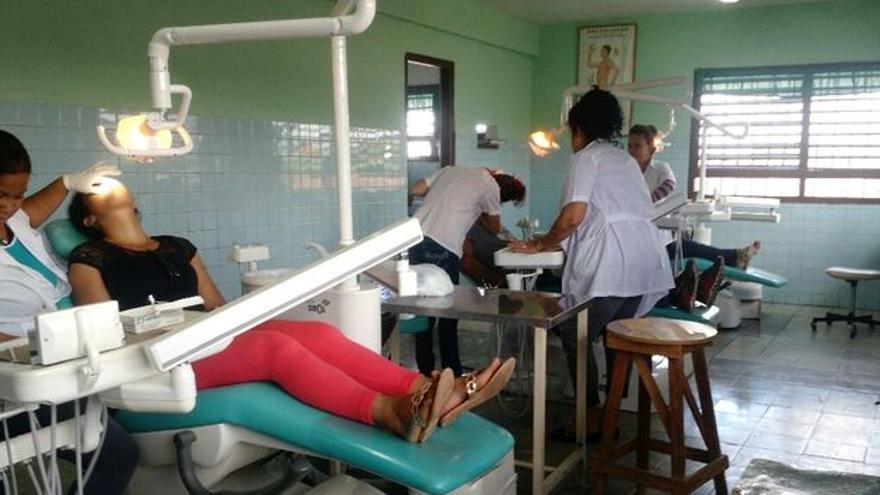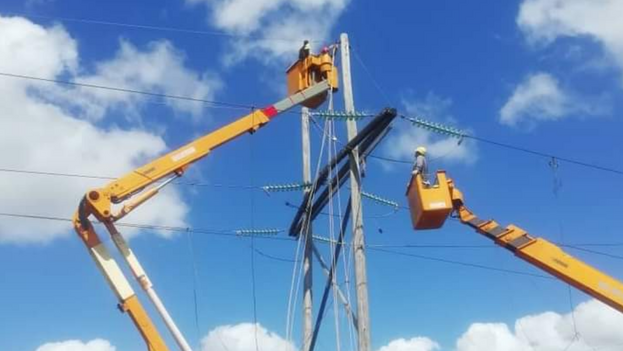
![]() 14ymedio, Madrid, 14 February 2023 — A fire in a cane field was the cause of the disconnection of the National Electricity System (SEN) that affected half of Cuba this Monday from the center to the east of the Island. The disconnection, from Ciego de Ávila to Guantánamo, occurred around 2 in the afternoon and lasted until 9 pm.
14ymedio, Madrid, 14 February 2023 — A fire in a cane field was the cause of the disconnection of the National Electricity System (SEN) that affected half of Cuba this Monday from the center to the east of the Island. The disconnection, from Ciego de Ávila to Guantánamo, occurred around 2 in the afternoon and lasted until 9 pm.
“When they burn the cane field, the air ionizes and can cause failures between the phases of the transmission lines. When the two lines left the system, the power transfer between the western-central-eastern area was cut off and caused the failure of the system from Ciego de Ávila to Guantánamo,” said a note from the Cuban Electrical Union (UNE).
The failure began to be noticed on a 220 KW line that links Sancti Spíritus and Vicente through two substations that left the network. Yoanni Acosta, director of the Electric Base Organization in the province, told the official newspaper Escambray that around 5 pm the damaged part of the system could be reconnected when the transfer from the western to the eastern part of the Island began to be restored.
The electricity company indicated that, due to the generation deficit at peak hours, “the province had 20 megawatts open,” which caused breakdowns in several circuits that remained until 8 pm. “As long as the generating plants in the east are incorporated, the impact will also progressively decrease in all the localities of those territories,” Acosta added.
After the announcement of the reconnection, several people warned on social networks that the blackout continued for them, complaints corroborated by the words of Lázaro Guerra Hernández, technical director of the UNE, who told state television that the service would recover “gradually” and that the total restoration was estimated for 11 pm. continue reading
The official added that, in addition, 240 megawatts of the generating capacity were damaged. For this Monday, in fact, an estimated electricity deficit of at least 112 MW had already been planned, reaching 182 at peak hour.
Yesterday’s blackout is the largest since September 27, 2021, after the passage of Hurricane Ian, when the National Electricity System completely collapsed and the country was left in the dark for several hours. It was the culmination of a summer of cuts that exceeded 14 and 16 hours at times and provoked protests almost daily in many municipalities.
The failures in the thermoelectric power plants, which provide most of the electricity to the Island, have been constant these months due to the lack of maintenance and obsolescence of the plants, which mostly exceed their useful life.
With the arrival of cold fronts, the fall in demand last December provided relief to the situation, to which was added the arrival of two Turkish floating power plants and the recovery of some thermoelectric units. However, the authorities have already warned that from January and, especially February, some plants would return to maintenance in an “organized” way to be ready in May and ensure an adequate volume of electricity generation.
At the moment, Unit 1 of Felton and 4 and 6 of Renté are in that situation. But to this must be added the breakdowns in blocks 6 and 7 of Mariel, 1 and 2 of Santa Cruz del Norte, 4 and 5 of Nuevitas and 2 of Felton.
The arrival in February of an eighth Turkish power plant, much more powerful than the previous ones with its 240 MW capacity, has not been enough to put an end to the instability of the system.
Translated by Regina Anavy
____________
COLLABORATE WITH OUR WORK: The 14ymedio team is committed to practicing serious journalism that reflects Cuba’s reality in all its depth. Thank you for joining us on this long journey. We invite you to continue supporting us by becoming a member of 14ymedio now. Together we can continue transforming journalism in Cuba.


